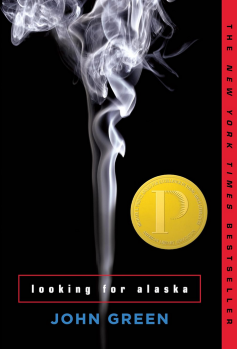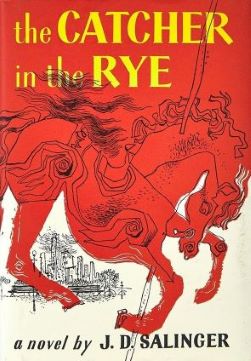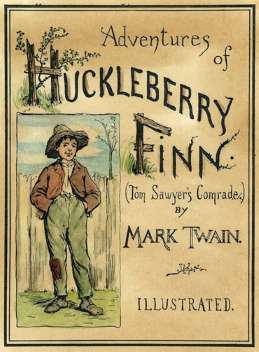Finding myself in Looking for Alaska.

The first time I read John Green’s Looking for Alaska, I was caught in that purgatory-like limbo called the transition from middle school to high school. I didn’t find the book; the book found me. My best friend back then came to class on one of our last days of eighth grade with her arms covered in quotes, Sharpie in one hand and Green’s novel in the other.
“How will we ever get out of this labyrinth of suffering?” was the first thing she said to me.
“You have to read this book,” was the second.
Just as it had her, Looking for Alaska found me when I needed it most. The YA novel follows the eccentrically brilliant Miles “Pudge” Halter as he attends the fictional Alabama preparatory academy Culver Creek for his junior year of high school. The story documents Pudge’s experiences and friends, one of whom is Alaska Young, who changes the trajectory of his life.
The book is split into two parts: the moments before the climax and the moments after. Initially, the need to uncover the mystery of what exactly turned the before into the after was the main driver motivating me to flip the pages. But something shifted as the chapters progressed. I became hyper-aware that somehow, some way, Green was chronicling not the life of an imaginary character and his fictional friends but my own experiences, nearly to a tee.
I first began to see myself in Chip “the Colonel” Martin, Pudge’s Black roommate. Chip was quick to befriend Pudge as somebody he recognized as real in a campus full of phonies — which is to say, Pudge and the Colonel came from similar economic and social backgrounds. The majority of Culver Creek’s students were filthy rich. As someone who went to school in an upper-middle-class neighborhood when my family was very much not, I related to the way Chip was able to voice, with humor, the thoughts I kept inside my head. He says at one point:
“I hate the rich snots here with a fervent passion I usually reserve only for dental work and my father.”
Of course, the source of Chip’s hatred isn’t the people but the microaggressions that accompany studying with those who not only look different than you but live differently than you. The rage that bubbles up every time you’re confused for the only other Black classmate. The embarrassment when your best picture-day shirt has holes and stains. The wonder whenever a car you’ve only seen on TV pulls into the carpool lane as you wait for the bus. Green captures that feeling of otherness not only in Chip but in Pudge and Alaska, too; his words serve as a beacon to anyone who’s ever felt like an outcast.
Through his depictions of mundane high-school life, Green paints a near-perfect picture of what it’s like to be young, especially in the South. He nails the stickiness that comes with simply existing in the relentless heat; the warmth of belonging that comes when gifted a nickname; and the silliness of pranks and crushes. Perhaps most importantly, he captures the emotional turmoil that infects so many teens — including me — during this stage in life.
In Alaska, Pudge’s classmate and eventual love interest, Green dives deep into the inner workings of a girl attempting to find herself in a world that can be so beautiful yet so cruel. As tough as Alaska’s experiences with depression, alcoholism, and sexual discovery may be for some audiences, they are like medicine: necessary, no matter how bitter. (They’re also what land Looking for Alaska on so many banned-book lists.)
No matter how uncomfortable Alaska’s actions make readers, they’re the things teens have long done and will continue to do. I knew then, like I know now, why my friend tattooed Alaska’s quotes onto her skin and why I turned her words into my phone’s screensaver. As scary as Alaska was, we saw ourselves in her, and that was enough.
I’m no longer friends with the girl who brought this treasure of a book into my life. Yet, every time I crack it open or glance at its spine on my shelf, I’m reminded of the life those pages poured into me, and I will forever thank her. The narrative brings back my youth in the best way possible — it represents how people can live forever through their words. Pudge, who ironically has a knack for memorizing people’s last words, says it best:
“When adults say, ‘Teenagers think they are invincible’ with that sly, stupid smile on their faces, they don’t know how right they are…We think that we are invincible because we are.”
Each time I reread Looking for Alaska, I feel invincible once more.
Nyah Hardmon is a broadcast-journalism graduate from Florida A&M University. As an award-winning spoken-word poet, she has touched stages like the Metropolitan Museum of Art in New York City and the Adrienne Arsht Center in Miami. Her poetry has been recognized by the National YoungArts Foundation, the Poetry Foundation, and the Presidential Scholar in the Arts program. She has creatively collaborated with companies such as Beats by Dre, Amazon Music, the Recording Academy, and SiriusXM. Her writing has been published in Poetry Magazine, Affinity Magazine, Teen Eye Magazine, the Famuan, the Hilltop, and HBCU Buzz. She currently serves as editor-in-chief of the music publication she founded, S&M Magazine.

